When it comes to home comfort, air conditioning is a must-have in many parts of the world. When it’s time to replace an old system or install air conditioning in a new home, homeowners face a choice: mini-split vs central air.
Both systems have pros and cons, and the best choice depends on a homeowner’s specific needs and preferences.
In this blog article, we’ll compare central air conditioning and ductless mini-split systems, weighing the benefits and drawbacks of each to help you make an informed decision.
Table of Contents
What is a Ductless Mini-Split System?
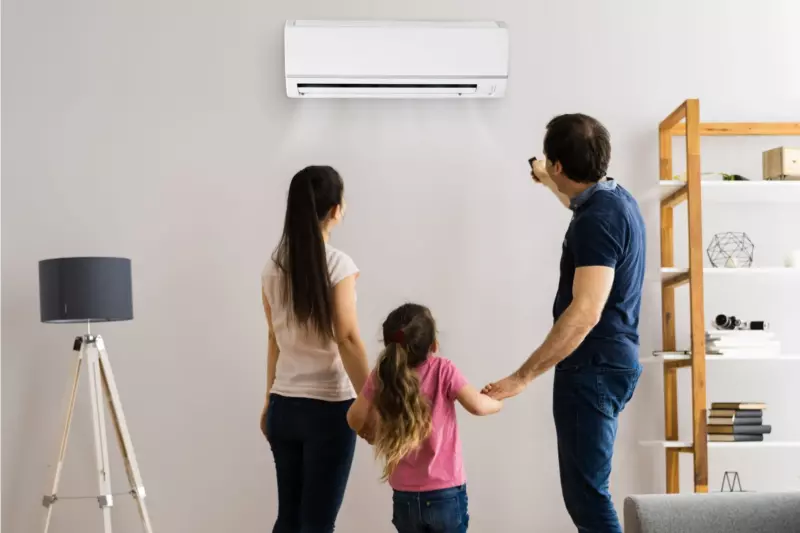
A ductless system is a type of AC that doesn’t require ductwork to distribute cool air throughout a home or building.
Instead, it consists of two main components: an outdoor unit, which contains the compressor and condenser, and one or more indoor units, which are mounted on the walls or ceiling of individual rooms.
The outdoor and indoor units are connected by a small, discreet conduit that houses the power cable, refrigerant line, and drain line.
The indoor unit contains a fan, evaporator coil, and air filter, which work together to cool the air and distribute it throughout the room.
The indoor unit can be controlled by a remote or wall-mounted thermostat, allowing homeowners to set and adjust the temperature in each room individually.
Because ductless mini splits don’t require ductwork, they can be an ideal choice for older homes that don’t have existing ducts or for additions or renovations where running ducts would be difficult or impractical.
In summary, the main components of ductless systems are:
- Outdoor Unit: Contains the compressor and condenser.
- Indoor Unit: Mounted on the wall or ceiling of each room and contains the fan, evaporator coil, and air filter.
- Conduit: Houses the power cable, refrigerant line, and drain line and connects the outdoor and indoor units.
- Remote or Wall-mounted Thermostat: Controls the indoor unit and sets the temperature in each room.
What is a Central AC System?
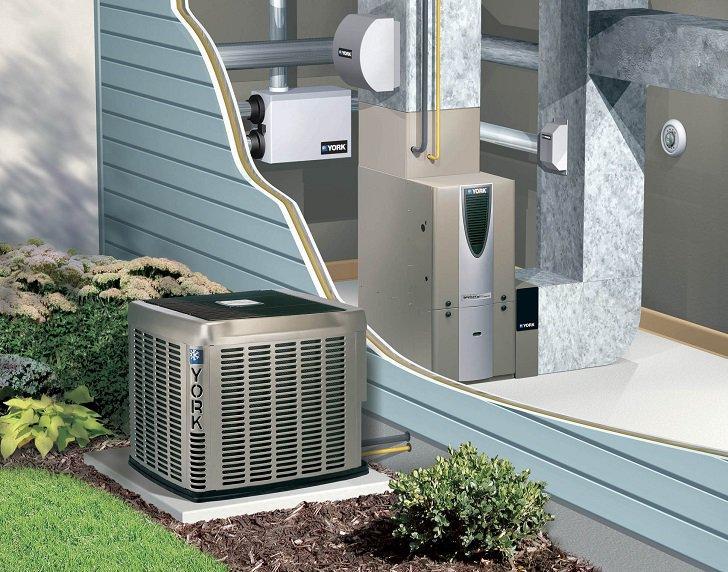
A central air unit is a type of air conditioning that cools and circulates air throughout an entire building using a centralized system of ducts.
The main components of a central air unit are:
- Outdoor Unit: Contains the compressor and condenser and is typically located outside of the building.
- Indoor Unit: Typically located in the attic or basement, the indoor unit contains the evaporator coil and air handler, which work together to cool the air and circulate it throughout the building via ducts.
- Ducts: A network of ducts carries the cooled air from the indoor unit to the various rooms in the building.
- Thermostat: Controls the central air unit and sets the temperature in the building.
- Refrigerant Lines: Connect the outdoor and indoor units and carry the refrigerant, which absorbs heat from inside the building and carries it outside to be released.
In central air units, the air is drawn into the indoor unit, where it is cooled and then distributed through the ducts to the various rooms in the building.
The cooled air is expelled through vents or registers, creating a comfortable indoor environment.
Central air conditioning systems are often preferred for larger buildings or homes, as they are able to cool a large area effectively and efficiently.
However, they can also be more expensive to install, as they require ductwork to be installed throughout the building.
Similarities and Differences
Similarities between Mini-Splits and Central AC Systems
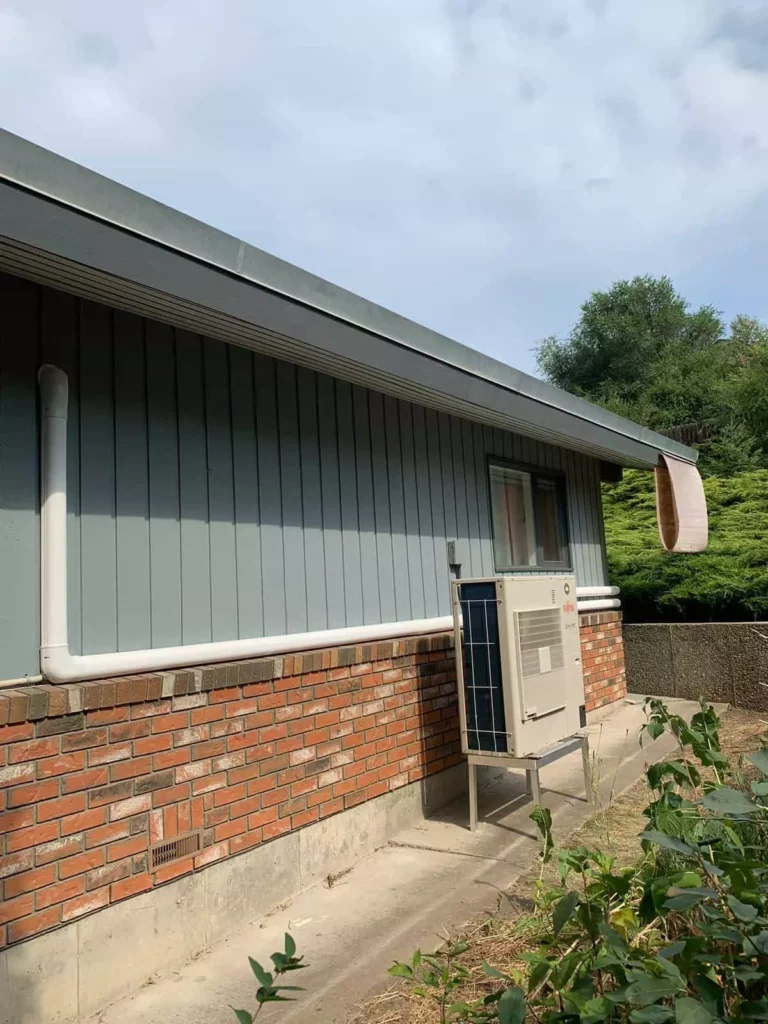
Both ductless systems and central air units have the following similarities:
- Purpose: Both systems serve the same purpose, which is to cool the air in a building and maintain a comfortable indoor temperature.
- Cooling Principle: Both systems use refrigerant and an evaporator coil to cool the air. The refrigerant absorbs heat from inside the building and carries it outside to be released.
- Thermostat: Both systems can be controlled by a thermostat, which sets the temperature and regulates the operation of the AC.
- Energy Efficiency: Both systems can be energy efficient and can help lower energy bills by maintaining a consistent temperature in the building.
- Maintenance: Both systems require regular maintenance, such as cleaning or changing air filters and checking refrigerant levels, to ensure optimal performance.
- Professional Installation: Both systems are typically installed by a professional HVAC contractor, who will determine the best size and type of system for the building based on its size and layout.
Similarities between Mini-Splits and Central AC Systems
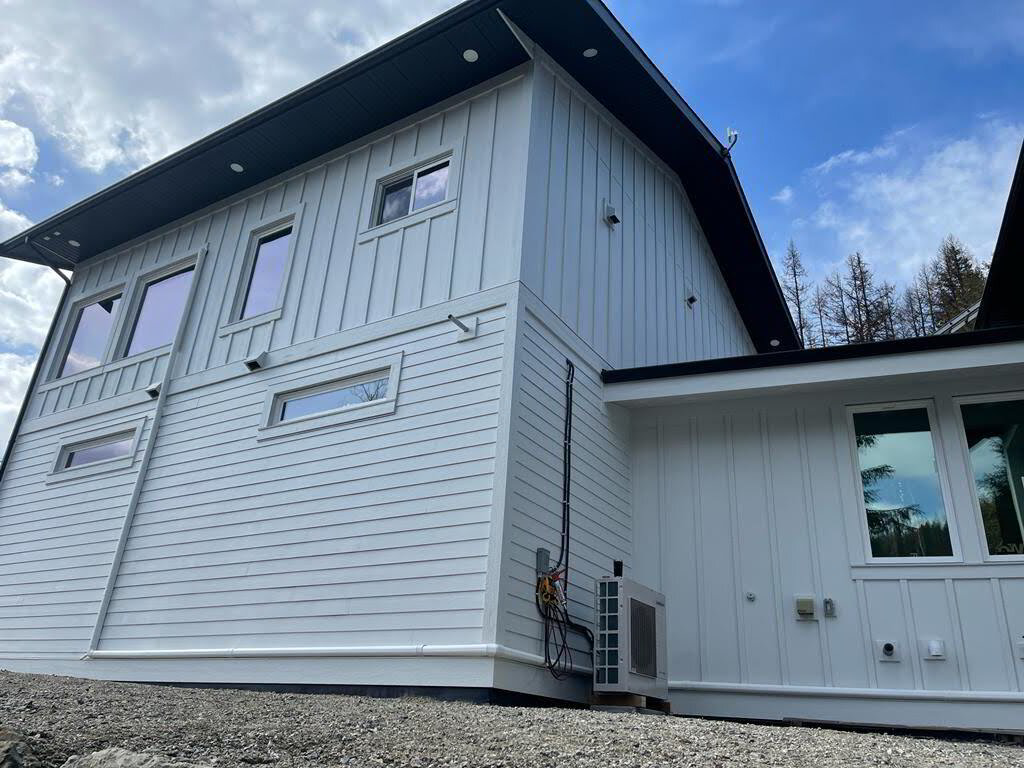
The differences between a ductless system and central air units include the following:
- Ductwork: Central air conditioning systems require ductwork to distribute the cooled air throughout the building, while ductless systems do not.
- Number of Units: Central air units have one outdoor unit and one indoor unit, while ductless systems can have one outdoor unit and multiple indoor units.
- Location of Units: The outdoor unit of a central air unit is typically located outside the building, while the outdoor unit of a ductless system is typically located on an exterior wall. The indoor units of a ductless system are mounted on the walls or ceiling of individual rooms.
- Flexibility: Mini-split units offer greater flexibility, as they allow homeowners to control the temperature in individual rooms while central air conditioning systems cool the entire building as a whole.
- Cost: A central air conditioner can be more expensive to install, as they require ductwork to be installed throughout the building. Mini-split units are typically more affordable, but the cost can add up if multiple indoor units are needed.
- Noise Level: Central air conditioners can be noisy, as the air handler and ductwork can create noise. Ductless mini-splits are typically quieter, as the indoor units are mounted on the walls or ceiling of individual rooms.
Cooling Capacity Of Mini Split Vs Central Air
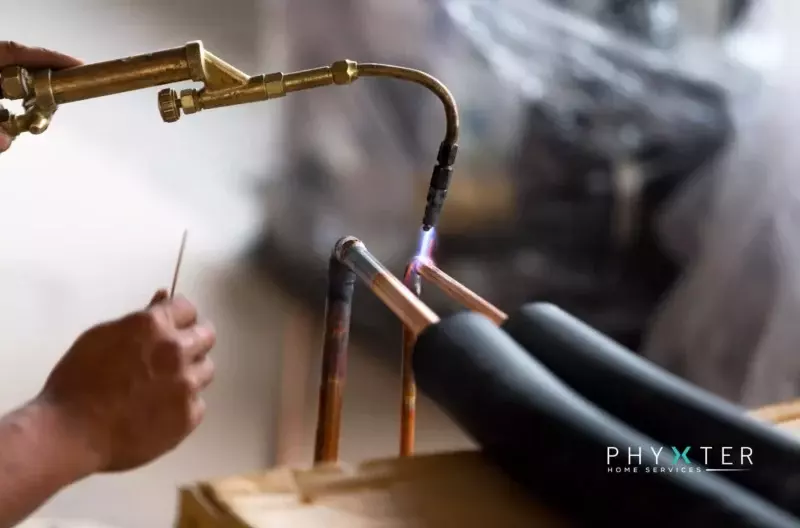
The cooling capacity of ductless mini-splits and central air conditioning systems can vary depending on several factors, including the size of the building, the number of indoor units, and the efficiency of the systems.
However, in general, a central air conditioner has a higher cooling capacity and is better suited for larger buildings, while a ductless heat pump system is better suited for smaller buildings or individual rooms.
A central air conditioner has the ability to cool large areas effectively and efficiently, as the cooled air is distributed throughout the building via ducts. In contrast, ductless mini-splits typically have a lower cooling capacity and are better suited for cooling individual rooms or smaller areas.
It is important to note that the cooling capacity of both systems can be influenced by factors such as the location of the units, the type of refrigerant used, and the efficiency of the systems.
A professional HVAC contractor can assess the cooling needs of a building and recommend the best system for the specific requirements.
Energy Efficiency Of Mini Splits Vs Central Air
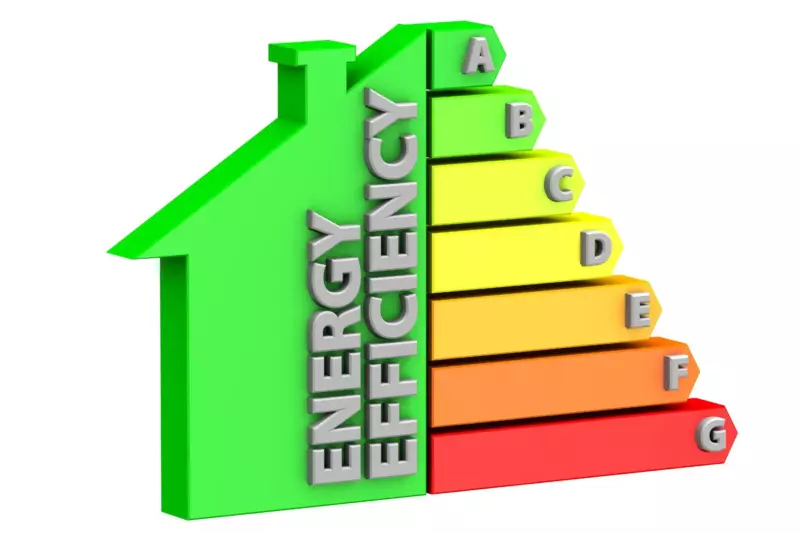
The efficiency of a system is usually measured by its Seasonal Energy Efficiency Ratio (SEER) rating, which indicates the amount of energy used to produce a certain amount of cooling.
The higher the SEER rating, the more efficient the system is.
Ductless mini-splits can have a SEER rating of up to 27, making them very efficient. On the other hand, central air conditioning systems can have a SEER rating of up to 21, which is still considered highly efficient.
It is important to note that the actual efficiency of a system can be influenced by factors such as the installation, maintenance, and usage of the system.
A professional HVAC contractor can help assess the cooling needs of a building and recommend the most efficient system for the specific requirements.
Advantages of Ductless Mini Split Heat Pumps
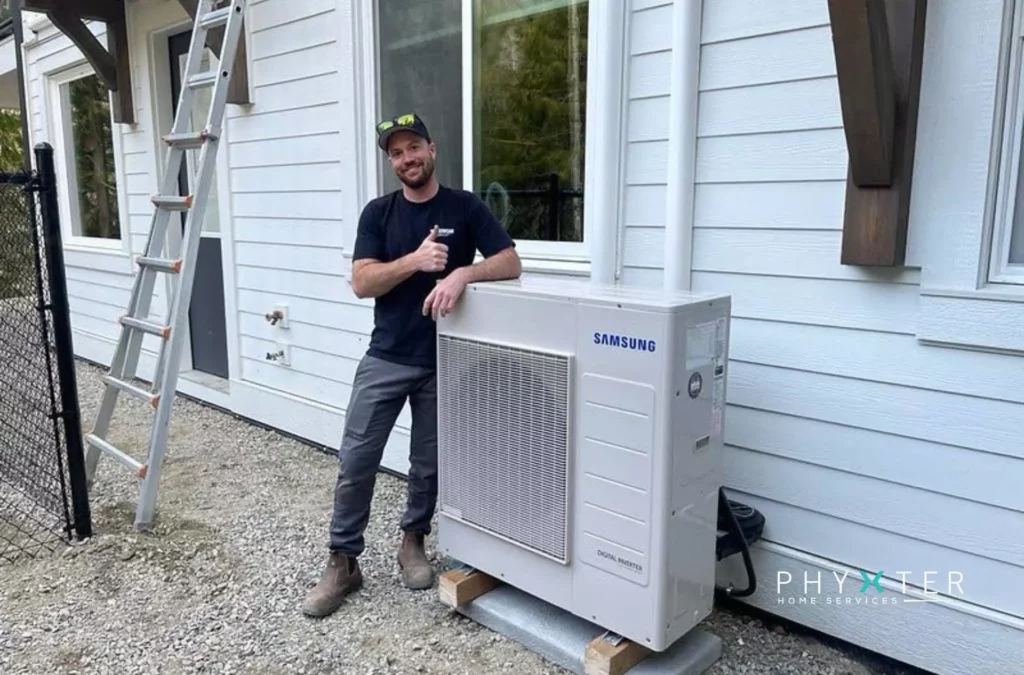
Ductless heat pumps are becoming increasingly popular for their many advantages over traditional heating and cooling systems.
Here are some of the key benefits of using a ductless heat pump system:
- Energy Efficiency: Ductless mini-splits are highly energy-efficient, as they use a heat pump technology that allows for heating and cooling without the use of a furnace or air conditioner. This results in lower energy bills and a smaller carbon footprint.
- Zone Control: One of the biggest advantages of ductless mini-splits is the ability to provide zone control. This means that different parts of the building can have different temperatures, allowing for a more customized and comfortable environment.
- Easy Installation: Ductless mini-splits are easy to install and require no ductwork, making them a great option for buildings that are not equipped with traditional duct systems.
- Quiet Operation: Ductless mini-splits are known for their quiet operation, as the indoor units are mounted on the walls or ceiling of individual rooms. This eliminates the noise that can be associated with traditional heating and cooling systems.
- Increased Air Quality: Ductless mini-splits improve air quality by circulating fresh air into the building, reducing the risk of indoor air pollution. Additionally, the air filters in the indoor units help to remove pollutants and allergens from the air.
- Increased Home Value: The installation of ductless mini-splits can increase the value of a home, as they are seen as a modern, energy-efficient, and convenient solution for heating and cooling.
- Long-lasting Performance: Ductless mini-splits are designed to last for many years, and they typically have a longer lifespan than traditional heating and cooling systems. This means that homeowners can enjoy the benefits of their ductless heat pump for many years to come.
In conclusion, ductless heat pumps offer a range of advantages over traditional heating and cooling systems, making them a great option for homeowners who are looking to save energy, increase comfort, and improve the overall quality of their indoor environment.
Disadvantages of Mini Split Heat Pumps
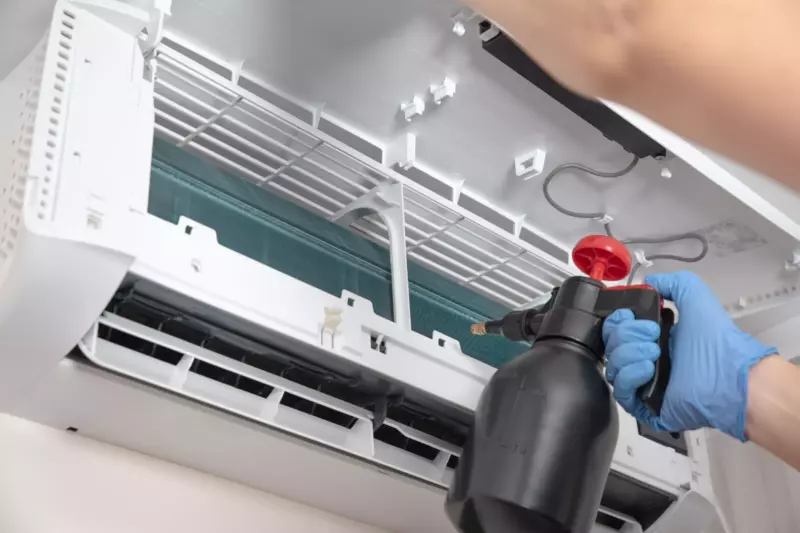
While ductless heat pumps have many advantages, they also have some disadvantages that should be considered before making a decision.
Here are some of the key drawbacks of using mini-split air conditioners:
- Cost: Ductless heat pumps can be more expensive to purchase and install than traditional heating and cooling systems, especially if multiple indoor units are needed.
- Limited Cooling Capacity: Ductless mini-split ACs are designed for cooling smaller areas or individual rooms and may not be able to effectively cool larger buildings. In these cases, a central air conditioner may be a better option.
- Maintenance Requirements: Ductless mini-split systems require regular maintenance to keep them functioning properly, including cleaning and changing air filters.
- Outdoor Unit: The outdoor unit of a ductless mini-split heat pump can be unsightly and may detract from the aesthetic of a building.
- Refrigerant Issues: Some ductless mini-split systems use refrigerants that have been banned due to their harmful effects on the environment. Homeowners should research the type of refrigerant used in the system they are considering and make an informed decision.
- Professional Installation: Ductless mini-split systems require professional installation, which can be more expensive and time-consuming than installing a traditional heating and cooling system.
In conclusion, ductless mini-split ACs have some disadvantages that should be considered when making a decision about heating and cooling systems.
Homeowners should carefully weigh the pros and cons of using a ductless mini-split heat pump and consult with a professional HVAC contractor to determine the best solution for their specific requirements.
Advantages of a Central Air Conditioning System
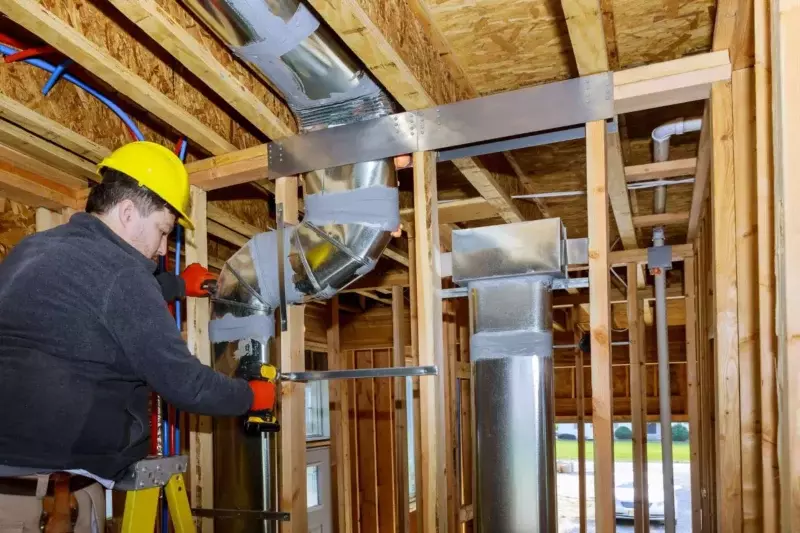
Central AC systems have been a popular choice for cooling homes and buildings for many years, and for good reason.
Here are some of the key advantages of using central air conditioners:
- Whole-Home Cooling: A central air unit cools the entire building, making it easy to maintain a comfortable temperature throughout.
- Energy Efficiency: Central AC systems can be highly energy efficient, especially when paired with a programmable thermostat and energy-saving features such as a high-efficiency air filter.
- Easy to Control: Central AC systems can be controlled with a simple thermostat, making it easy to adjust the temperature and cooling settings from one central location.
- Long-Lasting: Central AC systems are durable and built to last, often providing many years of reliable performance with proper maintenance.
- Quiet Operation: Central AC systems can be designed for quiet operation, making them a good choice for homes and buildings where noise levels are a concern.
- Widely Available: Central AC systems are widely available and can be purchased from a variety of retailers, making it easy to find the right system for a specific building.
In conclusion, central AC systems have many advantages that make them a popular choice for cooling homes and buildings.
Homeowners should carefully consider their specific requirements and consult with a professional HVAC contractor to determine the best solution for their needs.
Disadvantages of a Central Air Conditioning System

Central AC systems have been a popular choice for cooling homes and buildings for many years, but they also have some disadvantages that should be considered.
Here are some of the key drawbacks of using a central AC system:
- Cost: Central AC systems can be expensive to purchase and install, especially in older buildings that may require extensive ductwork.
- Ductwork Maintenance: Ductwork can be a source of air leaks and energy loss and requires regular maintenance and cleaning to keep it functioning properly.
- Limited Zone Control: Central AC systems typically cool the entire building and do not offer the ability to control the temperature in individual rooms. This can result in hot and cold spots and can make it difficult to maintain a comfortable temperature.
- Noise: Central AC systems can be loud, especially when the outdoor unit is located close to the building.
- Complexity: Central air systems are complex and require professional installation, which can be time-consuming and expensive. Additionally, they often require regular maintenance and repair to keep them functioning properly.
- Inefficient Operation: Central air systems can be inefficient, especially if the ductwork is not properly sealed or insulated. This can result in higher energy bills and a larger carbon footprint.
In conclusion, central air conditioning systems have some disadvantages that should be considered when making a decision about heating and cooling systems.
Homeowners should carefully weigh the pros and cons of using central air systems and consult with a professional HVAC contractor to determine the best solution for their specific requirements.
Difficulty Of Installing a Mini Split Vs Central Air System
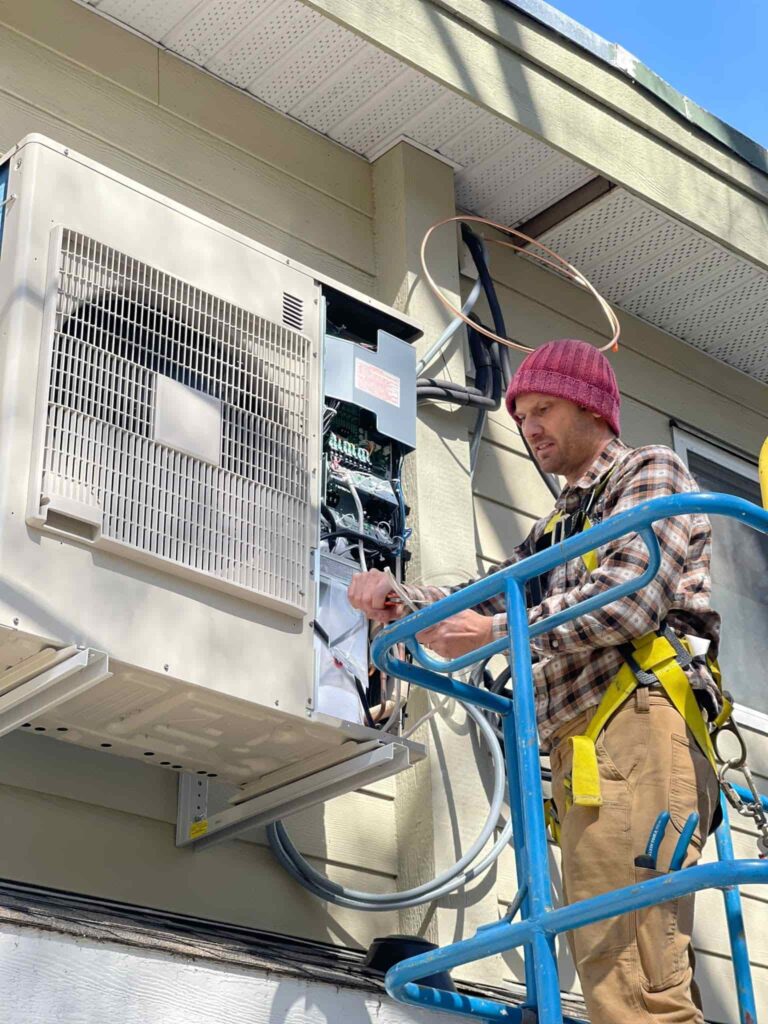
Installing a mini-split system can be more challenging than installing traditional central air systems. Here are a few factors that can affect the difficulty of the installation process:
- Access to the Space: Installing a mini-split system typically requires access to the interior and exterior of the building, which may require some modifications to walls, ceilings, or floors.
- Electrical Requirements: Ductless mini-split systems require a dedicated electrical circuit, which may require the services of an electrician.
- Wall or Ceiling Mounting: The outdoor unit of a mini-split system must be mounted on a wall or ceiling, which may require additional support or modifications.
- Refrigerant Line: The installation of a mini-split system requires the installation of a refrigerant line, which connects the indoor and outdoor units.
- Professional Installation: While some homeowners may choose to install a ductless mini-split system themselves, it is generally recommended that the installation be performed by a professional HVAC contractor.
In conclusion, the difficulty of installing a mini-split system can vary depending on the specific requirements of the building and the skills and experience of the installer.
Homeowners should consider their own capabilities and consult with a professional HVAC contractor to determine the best approach for their specific situation.
What tools would you need to install a ductless mini-split system?
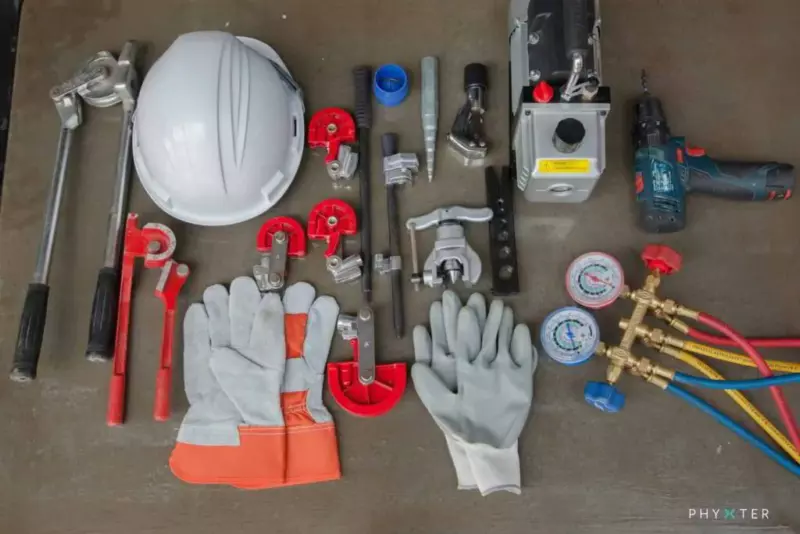
The tools required for installing a mini-split system will vary depending on the specific requirements of the installation, but here is a general list of tools that may be needed:
- Drill: A drill is necessary to create holes in walls or ceilings for the installation of indoor and outdoor units.
- Hole Saw: A hole saw is used to create the holes for the refrigerant line to pass through walls or ceilings.
- Wall Bracket: A wall bracket is used to mount the outdoor unit to a wall or ceiling.
- Level: A level is used to ensure that the outdoor unit is installed plumb and level.
- Pipe Benders: Pipe benders may be required to bend the refrigerant line to the correct shape and angle.
- Insulation Tape: Insulation tape is used to seal the refrigerant line where it passes through walls or ceilings to prevent air leaks.
- Screwdrivers: Screwdrivers are used to secure indoor and outdoor units to the wall or ceiling.
- Wrench or Pliers: A wrench or pliers are used to tighten fittings and connections on the refrigerant line.
- Vacuum Pump: A vacuum pump is used to evacuate the refrigerant system prior to charging it with refrigerant.
- Refrigerant Manifold Gauges: Refrigerant manifold gauges are used to measure the high and low side pressure of the refrigerant in the system.
- Vacuum Gauge: A vacuum gauge is used to measure the vacuum pressure in the system during the evacuation process.
- Hoses and Couplers: Hoses and couplers are used to connect the refrigerant gauges to the system and to transfer refrigerant from the cans to the system.
- Refrigerant Recovery Machine: A refrigerant recovery machine is used to safely recover refrigerant from the system during service or installation.
In conclusion, the tools required for installing a ductless mini-split air conditioning system can vary, but a general list of tools is provided above.
Homeowners should consult with a professional HVAC contractor to determine the specific tools required for their particular installation.
How Much Would it Cost to Buy All of the Tools to Install an AC System?
On average, a complete set of tools for installing a ductless mini-split air conditioning system can cost anywhere from $2500 to $7,000 or more, with higher-end tools costing more.
It is important to note that many HVAC contractors already have these tools and will not require homeowners to purchase them.
However, for homeowners who wish to install the system themselves, purchasing the necessary tools will be a significant part of the total cost of the installation.
Mini-split vs Central Air – Differences in Control Temperature
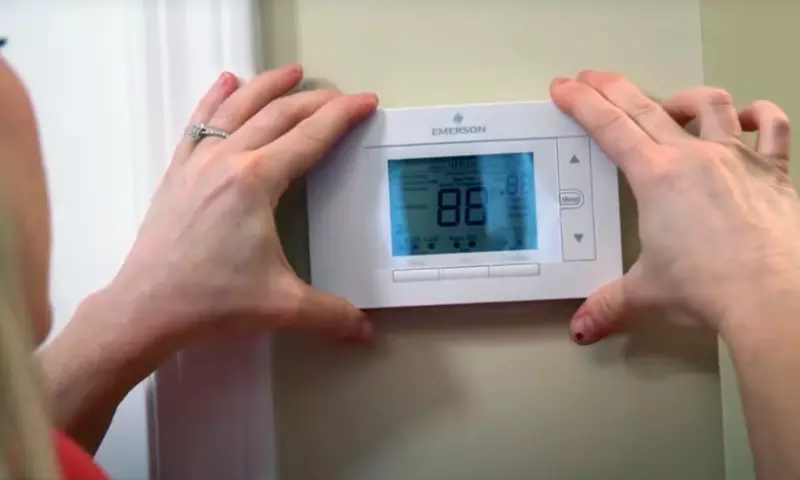
Temperature control is an important aspect of any cooling system, and the type of system you choose can greatly impact the level of control you have over the temperature in your home.
In this section, we will compare the temperature control differences between a ductless mini-split cooling system and a central cooling system.
Central Air Conditioning System:
In a central air unit, temperature control is typically achieved through the use of a thermostat that is installed in a central location in the home.
This thermostat communicates with the air conditioning unit to regulate the temperature in the home.
The temperature control in a central air unit can be limited, as the entire system operates as one unit, meaning that it is difficult to control the temperature in specific rooms.
Ductless Mini-Split Air Conditioning System:
Ductless mini-split systems offer a much higher level of temperature control compared to central air units. Each mini-split unit has its own thermostat, which allows for temperature control in individual rooms.
This means that you can set different temperatures for different rooms in your home, making it easier to control the temperature in areas that are used more frequently.
In conclusion, ductless mini-split systems offer greater temperature control compared to central air conditioning systems.
This is because each mini-split unit has its own thermostat, allowing for temperature control in individual room
s. This feature can provide greater comfort and efficiency in a home compared to central air units, which operate as a single unit.
Which is Better for Interior Design
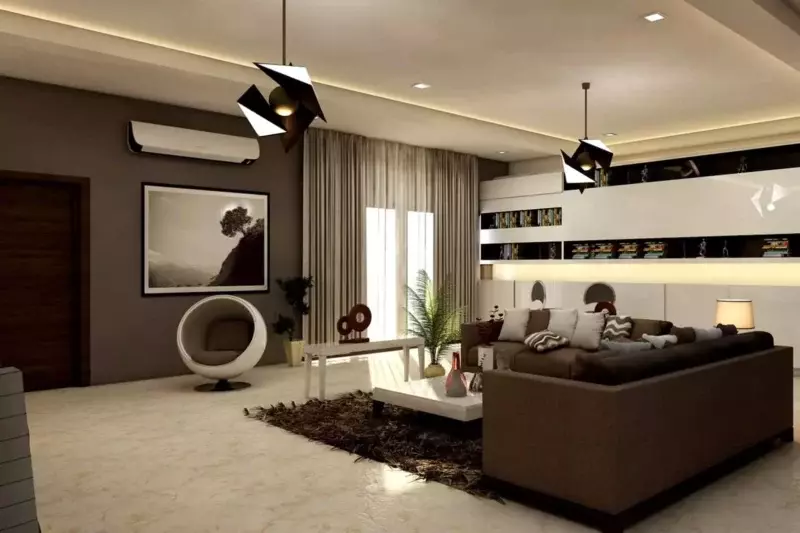
The appearance and design of an AC system can greatly impact the overall look and feel of a home.
Both central systems have their own unique design features and benefits, which make them better suited for different types of homes and interior design styles.
Central Air Conditioners:
Central air conditioning systems are designed to be hidden from view and integrated into the existing ductwork and electrical systems of a home.
This type of system can be a great choice for homes that want to maintain a clean and minimalist look, as it does not take up any visible space.
Central air conditioning systems are typically less noticeable and less intrusive than ductless systems, making them a good choice for homes with a modern or contemporary design style.
Ductless Air Conditioners:
Ductless heat pumps are designed to be a more decorative and visible feature of a home.
These systems have a sleek and modern appearance, which can complement a wide range of interior design styles.
They are also available in a variety of colors and styles, which can be used to complement the existing decor of a home.
In conclusion, both ductless mini-split ACs and central air conditioning systems can be suitable for different interior design styles, depending on the specific needs and preferences of the homeowner.
If a clean and minimalist look is desired, a central system may be the best choice. However, if a more decorative and noticeable feature is desired, ductless may be a better option.
Mini-Split vs. Central Air Conditioner: How to Decide Which One Is Best for You?

In conclusion, both ductless ACs and central AC systems have their own unique advantages and disadvantages.
When deciding between the two, it is important to consider factors such as the size of your home, your budget, and your specific cooling and heating needs.
Ductless ACs are an excellent choice for homes without existing ductwork or for those that need to add additional cooling or heating to specific rooms.
They are also more energy-efficient and provide greater temperature control compared to central air conditioning systems.
On the other hand, central air conditioning systems are a good choice for larger homes, as they provide more consistent and even cooling throughout the entire house.
Ultimately, the best choice will depend on your specific needs and preferences. It is recommended to consult with a professional HVAC technician to determine which type of AC system is best for your home.
They will be able to assess your needs and help you choose the most cost-effective and energy-efficient option for your unique situation.
If you would like to learn more about heat pumps, feel free to check our article on Heat Pumps vs ACs.

